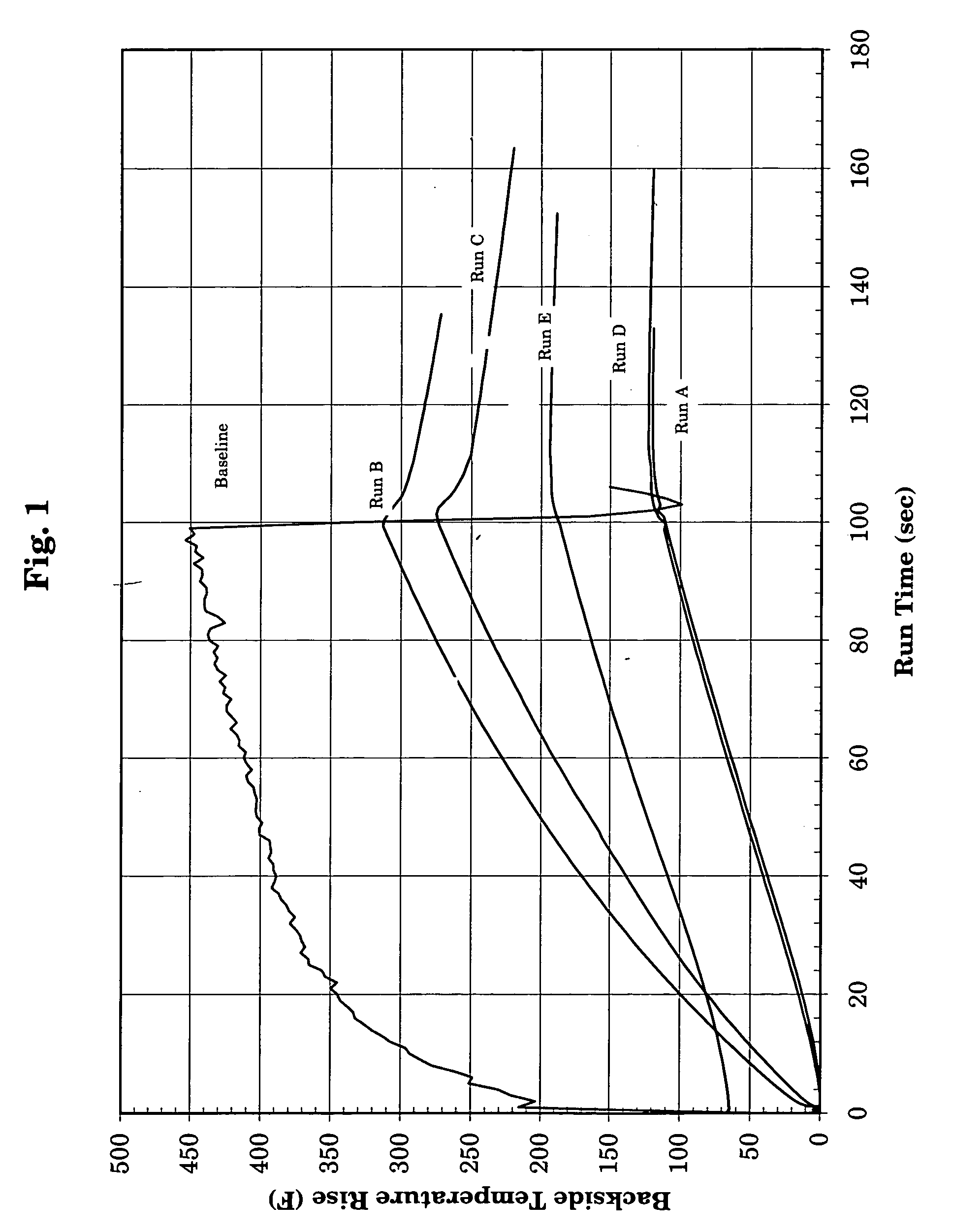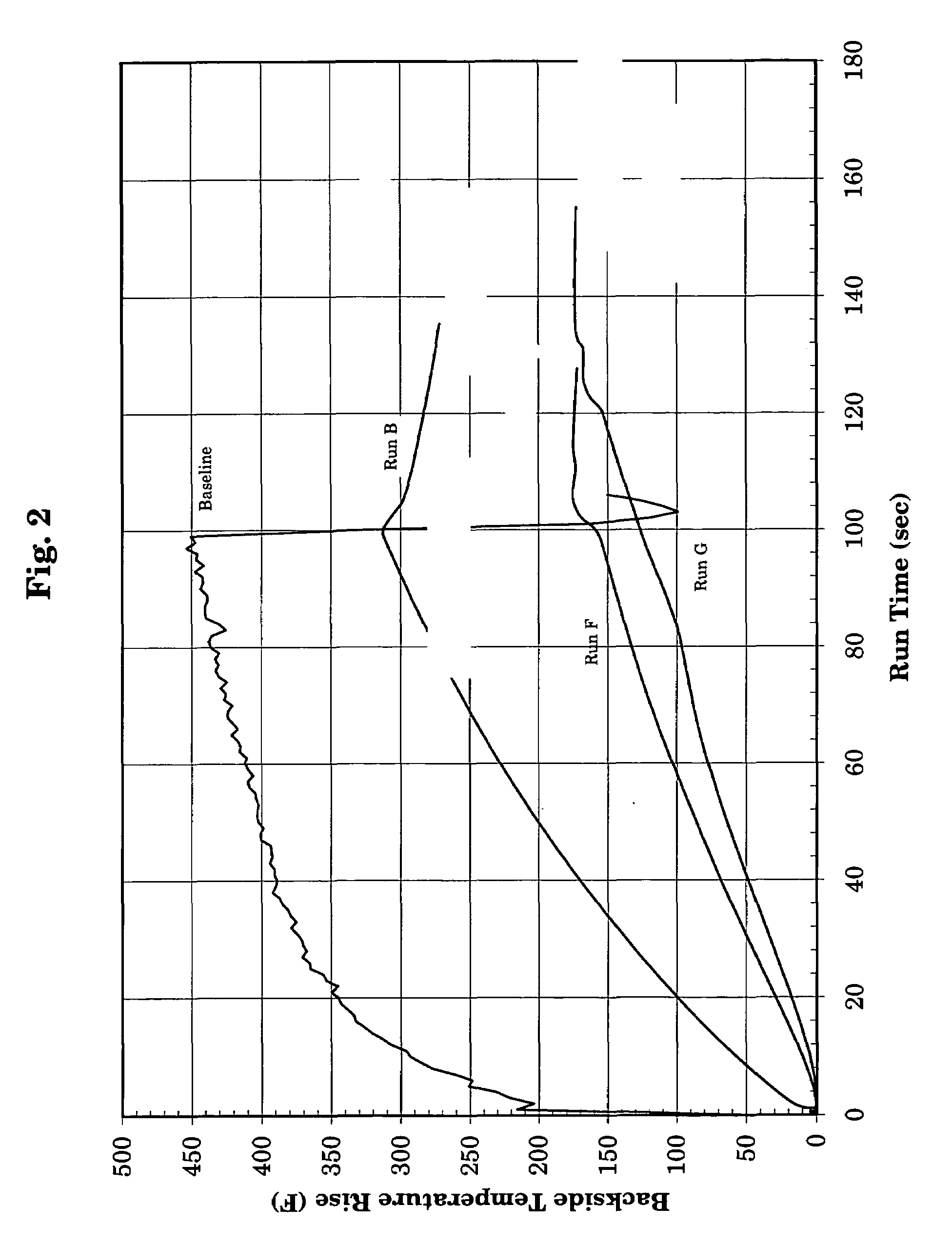Thermal insulating coating for spacecrafts
a technology of thermal insulation coating and spacecraft, applied in the field of thermal insulation coating for spacecraft, can solve the problems of inability to optimize tps from every point of view, most electronic equipment is susceptible to permanent damage, and tps is subject to other constraints
- Summary
- Abstract
- Description
- Claims
- Application Information
AI Technical Summary
Benefits of technology
Problems solved by technology
Method used
Image
Examples
specific embodiments
[0019]To further illustrate the invention specific examples will now be given. In these examples, all parts and percentages are by weight unless otherwise specified. In addition, it is frequently desirable to include in the coating composition additional additives, for instance, a UV protecting agent, a fire retardant, or a corrosion inhibitor. In some of the examples this has been done. In addition, in some cases ethanol has been included for achieving a more workable composition. Since it quickly evaporates during the curing of the film, it was not included in the phase change material percent solids calculations. In the examples the number following Thermasorb is its peak transition temperature. It should also be emphasized that although the curing agent is included in the examples which follow, it will be incorporated in the mix prior to the application of the coating compositions as is normal in the case of thermosetting resins.
example 1
[0020]In a suitable reaction vessel equipped with a mechanical stirrer, 72 parts of an epoxide resin made from bisphenol-A and epichlorohydrin and having a molecular weight of less than 400 and an epoxy equivalent in the range of 175 to 200, were mixed with 19 parts of an amine curing agent sold under the trademark Ancamine 1768. To the mix 1 part of a UV protecting agent and 9 parts of the fire retardant, diethyl-N,N-bis(2-hydroxyethyl) amino methyl phosphate were added to form 100 parts of a resinous binder, Coating Composition C.
example 2
[0021]To form a coating composition of this invention, 46 parts of ethyl alcohol were stirred into Coating Composition C. Then 138 parts of a paraffinic hydrocarbon phase change material having a peak transition temperature of 122° F., available as Thermasorb 122, were added to form approximately a 58 percent solids coating composition excluding the alcohol which evaporates, Coating Composition A.
PUM
| Property | Measurement | Unit |
|---|---|---|
| temperatures | aaaaa | aaaaa |
| energy density | aaaaa | aaaaa |
| temperatures | aaaaa | aaaaa |
Abstract
Description
Claims
Application Information
 Login to View More
Login to View More - R&D
- Intellectual Property
- Life Sciences
- Materials
- Tech Scout
- Unparalleled Data Quality
- Higher Quality Content
- 60% Fewer Hallucinations
Browse by: Latest US Patents, China's latest patents, Technical Efficacy Thesaurus, Application Domain, Technology Topic, Popular Technical Reports.
© 2025 PatSnap. All rights reserved.Legal|Privacy policy|Modern Slavery Act Transparency Statement|Sitemap|About US| Contact US: help@patsnap.com


